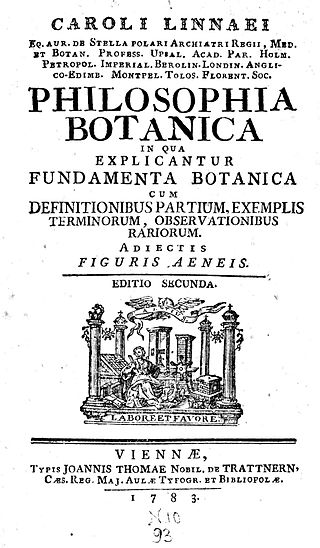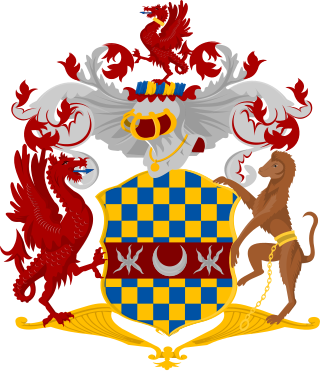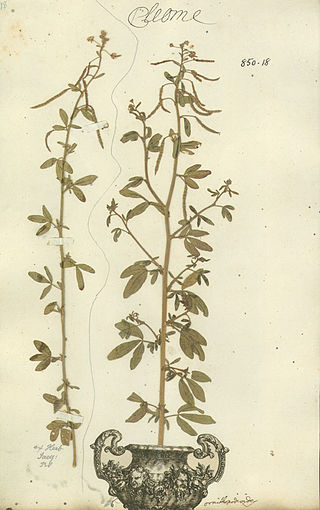
Carl Linnaeus, also known after ennoblement in 1761 as Carl von Linné, was a Swedish biologist and physician who formalised binomial nomenclature, the modern system of naming organisms. He is known as the "father of modern taxonomy". Many of his writings were in Latin; his name is rendered in Latin as Carolus Linnæus and, after his 1761 ennoblement, as Carolus a Linné.

Bennebroek is a village and former municipality in the northwest Netherlands, now part of Bloemendaal, North Holland. Before its merger in 2009, it was the smallest municipality in the Netherlands, covering an area of only 1.75 km².

Heemstede is a town and a municipality in the Western Netherlands, in the province of North Holland. In 2021, it had a population of 27,545. Located just south of the city of Haarlem on the border with South Holland, it is one of the richest municipalities of the Netherlands.
The year 1738 in science and technology involved some significant events.

Johann Jacob Dillen Dillenius was a German botanist. He is known for his Hortus Elthamensis on the rare plants around Eltham, London, and for his Historia muscorum, a natural history of lower plants including mosses, liverworts, hornworts, lycopods, algae, lichens and fungi.

Sherardia is a monotypic genus of flowering plants in the family Rubiaceae. The genus contains only one species, Sherardia arvensis, the (blue) field madder, which is widespread across most of Europe and northern Africa as well as southwest and central Asia and Macaronesia. It is also reportedly naturalized in Australia, New Zealand, Taiwan, Kerguelen, Ethiopia, Sudan, southern Africa, Mexico, Costa Rica, South America, Bermuda, Cuba, Haiti and much of Canada and the United States.

Georg Dionysius Ehret was a German botanist and entomologist known for his botanical illustrations.

Hendrik Adriaan van Rheede tot Drakenstein was a military man and a colonial administrator of the Dutch East India Company and naturalist.

Hartekamp, or Hartecamp, is the name of a villa in Heemstede, North Holland, the Netherlands, on the Bennebroek border. It was once the Buitenplaats of George Clifford, who employed Carl Linnaeus in 1737 to write his Hortus Cliffortianus, a detailed description of the gardens of Hartecamp.

The Leidsevaart is a canal between the cities of Haarlem and Leiden in the Netherlands. It was dug in 1657, making it one of the oldest canals in the Netherlands. It was the major means of transport between Leiden and Haarlem for almost two centuries until the rail connection was established in the 19th century. The original stops along the railway mirrored the toll bridges of the canal.

George Clifford III was a wealthy Dutch banker and one of the directors of the Dutch East India Company. He is known for his keen interest in plants and gardens.

Oud Poelgeest is a castle in Oegstgeest, north of Leiden, that was the former home of the Dutch scientist Herman Boerhaave (1668–1738). He was a Dutch humanist and physician of European fame.

Philosophia Botanica was published by the Swedish naturalist and physician Carl Linnaeus (1707–1778) who greatly influenced the development of botanical taxonomy and systematics in the 18th and 19th centuries. It is "the first textbook of descriptive systematic botany and botanical Latin". It also contains Linnaeus's first published description of his binomial nomenclature.

Johannes Burman, was a Dutch botanist and physician. Burman specialized in plants from Ceylon, Amboina and Cape Colony. The name Pelargonium was introduced by Johannes Burman.

The Clifford family was a family of bankers, merchants, and regents of English descent who were active in Amsterdam during the sixteenth through eighteenth centuries. The family originated in northern England, although the surname originated in the village of Clifford, Herefordshire. Northern England was the home of the noble Clifford family, since Roger Clifford was born in Cumberland and died at Brough Castle in Westmorland. There is no evidence that the Clifford banking family is descended from a nobleman named Clifford who fought for William I of England.

Cleome ornithopodioides or bird spiderflower is the type species of the genus Cleome which is part of the family Cleomaceae or Brassicaceae. The species epithet means "birds-foot like".

Genera Plantarum is a publication of Swedish naturalist Carl Linnaeus (1707–1778). The first edition was issued in Leiden, 1737. The fifth edition served as a complementary volume to Species Plantarum (1753). Article 13 of the International Code of Nomenclature for algae, fungi, and plants states that "Generic names that appear in Linnaeus' Species Plantarum ed. 1 (1753) and ed. 2 (1762–63) are associated with the first subsequent description given under those names in Linnaeus' Genera Plantarum ed. 5 (1754) and ed. 6 (1764)." This defines the starting point for nomenclature of most groups of plants.

The bibliography of Carl Linnaeus includes academic works about botany, zoology, nomenclature and taxonomy written by the Swedish botanist Carl Linnaeus (1707–1778). Linnaeus laid the foundations for the modern scheme of binomial nomenclature and is known as the father of modern taxonomy. His most famous works are Systema Naturae which is considered as the starting point for zoological nomenclature together with Species Plantarum which is internationally accepted as the beginning of modern botanical nomenclature.

Critica Botanica was written by Swedish botanist, physician, zoologist and naturalist Carl Linnaeus (1707–1778). The book was published in Germany when Linnaeus was 29 with a discursus by the botanist Johannes Browallius (1707–1755), bishop of Åbo. The first edition was published in July 1737 under the full title Critica botanica in qua nomina plantarum generica, specifica & variantia examini subjiciuntur, selectoria confirmantur, indigna rejiciuntur; simulque doctrina circa denominationem plantarum traditur. Seu Fundamentorum botanicorum pars IV Accedit Johannis Browallii De necessitate historiae naturalis discursus.

Cliffortia, or Caperose is a genus of plants that has been assigned to the rose family, with currently 132 known species. Its species can be found in southern Africa, particularly in the Cape Floristic Region where 124 of the species can be found, 109 of which are endemic to the CFR. Most species are ericoid shrubs, some small trees up to 5 m high, others more or less herbaceous groundcover. All are wind pollinated and have separate male and female flowers in the axils of the leaves, mostly individually, sometimes grouped, which may be on the same plant or on separate plants.




















